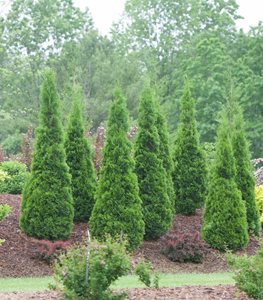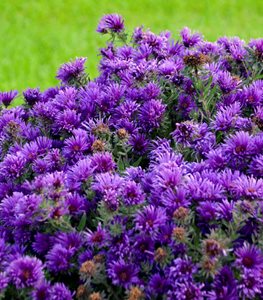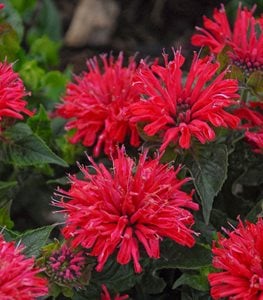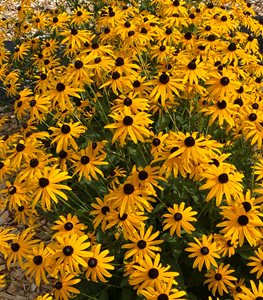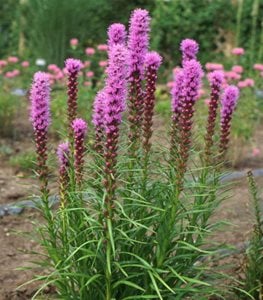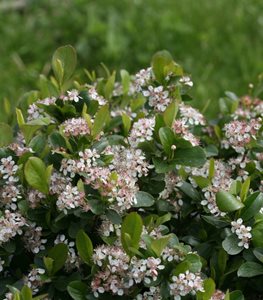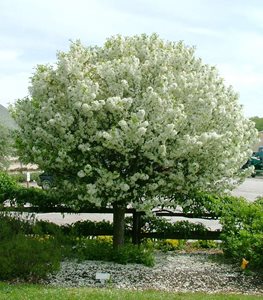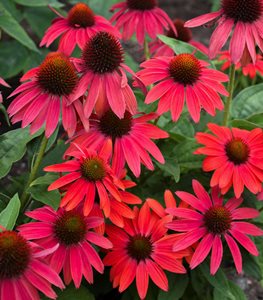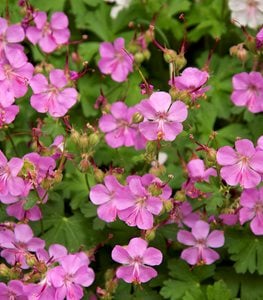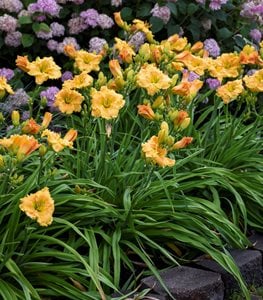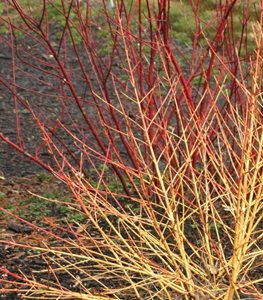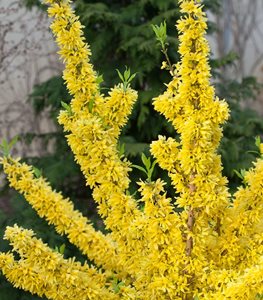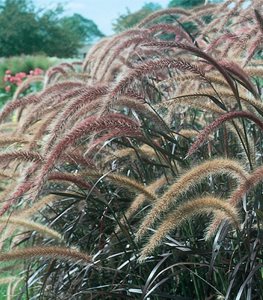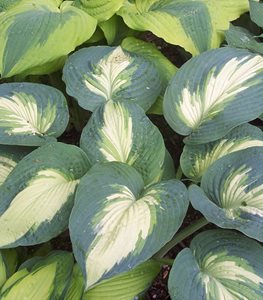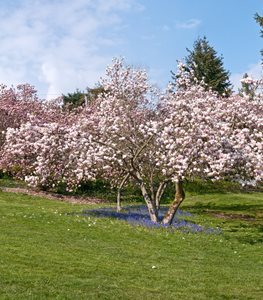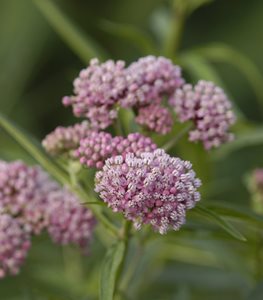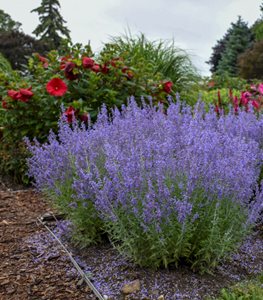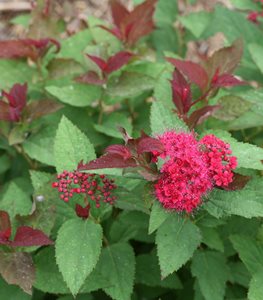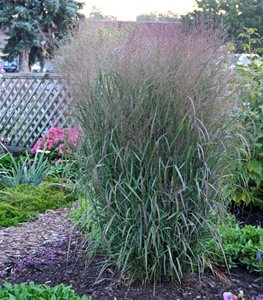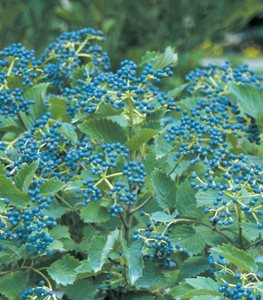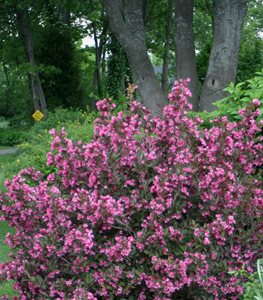25 Best Plants for Clay Soil
Deal with challenging clay soil by choosing plants that will thriveGood soil is the foundation of healthy plants. There are several different soil types, including sandy, loam, clay, or silt. Some soils are better for plants than others, with most native soils needing some sort of amending. It’s crucial to know which kind of soil type you have, and if you need to improve it before adding plants to your yard.
Clay is one of the most challenging soils to deal with. It is characterized by a heavy, sticky consistency when wet, becoming hard and dense when dry. This can restrict the flow and uptake of water and nutrients for plants, impede root growth, and cause water to pool, which can cause root rot and other diseases. Amending clay soil with compost or other rich organic matter improves soil consistency and drainage, while providing crucial nutrients to plants. Also remember, that organic matter does break down over time, so plant slightly high to allow for this.
Some plants are more adaptable to clay soil than others, while there are plants that thrive in clay soil. Here are some of the best clay soil plants.
Learn more: Clay Soil: What It Is and When You Should Amend It.
ARBORVITAE (Thuja spp.)
Zones: 2-9, depending on the variety
Exposure: Full sun to partial shade
Habit: Pyramidal or mounding habit
Height/Spread: 2 to 70 feet tall, 2 to 25 feet wide
Bloom time: Flowers insignificant.
Arborvitae is a coniferous tree or shrub with blue-green, gold, or green foliage. This hardy evergreen is commonly used as privacy hedging or in shrub borders. Arborvitae prefers well-drained, loamy soils, but is adaptable to different soils including clay.
Find more on growing arborvitae.
ASTER (Symphyotrichum spp.)
Grape Crush New England Aster —
Zones: 3-8
Exposure: Full sun to partial shade
Habit: Upright spreading habit
Height/Spread: 1 to 6 feet tall, 1 to 4 feet wide
Bloom time: Summer to fall
This fall-blooming perennial produces daisy-like flowers in shades of white, pink, blue, and purple. Use in mixed borders or native gardens. Asters can grow in clay soil if amended with organic matter. Poor drainage can lead to root rot.
Find more on growing aster.
BEE BALM (Monarda spp.)
Zones: 3-9
Exposure: Full sun to partial shade
Habit: Upright spreading habit
Height/Spread: 1 to 4 feet tall, 1 to 3 feet wide
Bloom time: Late spring to fall
This hardy herbaceous perennial produces colorful flowers that resemble fireworks, attracting a range of pollinators. Plant in a wildlife garden or cottage-style border. Bee balm is tolerant of heavy clay, but performs best in rich soil with good drainage. Amend clay soil with organic matter.
Find more on growing bee balm.
BLACK-EYED SUSAN (Rudbeckia spp.)
Mega Millions® Black-eyed Susan — Learn more on Proven Winners
Zones: 3-10
Exposure: Full sun
Habit: Upright spreading habit
Height/Spread: 1 to 5 feet tall, 1 to 3 feet wide
Bloom time: Summer to fall
This summer-blooming perennial produces vibrant daisy-like flowers with rich golden petals and brown centers. Grow black-eyed Susans in cottage-style borders and natural landscapes. This tough prairie native is tolerant of different growing conditions, including clay soil.
Find more on growing black-eyed Susan.
BLAZING STAR (Liatris spp.)
Zones: 3-9
Exposure: Full sun
Habit: Upright habit
Height/Spread: 1 to 5 feet tall, 6 inches to 2 feet wide
Bloom time: Summer to fall
Blazing star is a prairie native with tall flower spikes in hues of pink, purple, and white. This hardy perennial is one of the best plants for attracting pollinators, and is tolerant of different soils, including clay. Fertile soil may cause plants to flop.
Find more on growing blazing star.
CHOKEBERRY (Aronia spp.)
Zones: 3-9
Exposure: Full sun to partial shade
Habit: Bushy habit
Height/Spread: 8 inches to 12 feet tall, 1-1/2 to 10 feet wide
Bloom time: Spring
Chokeberry produces edible blueberry-like fruits with a range of health benefits. This deciduous shrub does best in moist, well-draining soil, and is tolerant of different soils including sand and clay. Naturalize in a boggy area, or plant in a rain garden.
Find more on growing chokeberry.
CRABAPPLE (Malus spp.)
Lollipop® — Learn more from Proven Winners
Zones: 4-8
Exposure: Full sun to partial shade
Habit: Upright, spreading, weeping or columnar habit
Height/Spread: 15 to 20 feet tall, 12 to 20 feet wide. Dwarf varieties are smaller.
Bloom time: Mid to late spring
Crabapple is a common landscape tree, with showy spring blossoms and small fruits that provide ornamental interest in winter. Plants are adaptable to most soils, including clay, as long as there is good drainage. Use as a focal point or street tree.
Find more on growing crabapple.
CONEFLOWER (Echinacea spp.)
Zones: 3-9
Exposure: Full sun
Habit: Upright spreading habit
Height/Spread: 1 to 5 feet tall, 1 to 2 feet wide
Bloom time: Summer
This popular prairie native is named for the cone-shaped flowers that bloom in summer. Use in a wildflower meadow or pollinator garden. One of the best clay soil perennials, coneflower is tolerant of heat, drought, and humidity.
Find more on growing coneflower.
CRANESBILL GERANIUM (Geranium spp.)
Zones: 4-9
Exposure: Full sun to partial shade
Habit: Upright or mounding habit
Height/Spread: 6 to 36 inches tall, 12 to 36 inches wide
Bloom time: Spring to fall, depending on the variety
A staple of English-style gardening, cranesbill geranium is commonly used as an underplanting to roses, or as a ground cover. Plants produce attractive scalloped foliage and long blooming strawberry-like flowers. This hardy perennial is one of the best flowers for clay soil.
Find more on growing cranesbill geraniums.
DAYLILY (Hemerocallis spp.)
Zones: 3-9
Exposure: Full sun
Habit: Upright clumping habit
Height/Spread: 1 to 6 feet tall, 1 to 4 feet wide
Bloom time: Late spring to fall
This popular long-lived perennial has trumpet-shaped flowers in a range of colors. Plant in mixed borders or cottage-style landscapes. Daylily is virtually carefree and adaptable to different soils. Amend clay soil with organic matter and keep soil evenly moist.
Find more on growing daylily.
DOGWOOD (Cornus spp.)
Zones: 2-9, depending on the variety
Exposure: Full sun to partial shade
Habit: Tall upright or compact bushy habit
Height/Spread: 3 to 40 feet tall and wide
Bloom time: Spring
Dogwood is a popular deciduous tree or shrub with four-season appeal. Tree forms create a spectacular floral display in spring, while shrub types are revered for their colorful winter stems. Dogwoods prefer amended soil with good drainage, but tolerate clay and wet soil.
Find more on growing dogwood.
FORSYTHIA (Forsythia spp.)
Zones: 3-9
Exposure: Full sun to partial shade
Habit: Upright, bushy or arching habit
Height/Spread: 1 to 10 feet tall, 3 to 10 feet wide
Bloom time: Early to mid-spring
This deciduous shrub is grown for the cheerful bright-yellow flowers that light up the landscape in early spring. Use as hedging or in foundation plantings. Forsythia is one of the best clay soil plants, adaptable to different growing conditions as long as there is good drainage.
Find more on growing forsythia.
FOUNTAIN GRASS (Pennisetum spp.)
Graceful Grasses® Purple Fountain Grass —
Zones: 5-11
Exposure: Full sun to partial shade
Habit: Upright spreading habit
Height/Spread: 1 to 5 feet tall, 1 to 4 feet wide
Bloom time: Summer to fall
Fountain grass produces graceful foliage and large, feathery flower plumes from summer into fall. Use this drought-tolerant perennial in a curbside planting or waterwise landscape. Amend clay soil with organic matter to prevent root rot. Learn more about growing fountain grasses.
HOSTA (Hosta spp.)
Zones: 3-9
Exposure: Part sun to shade
Habit: Upright clumping habit
Height/Spread: 2 inches to 4 feet tall, 5 inches to 5 feet wide, depending on the variety
Bloom time: Summer
Hosta is one of the best plants for shade and clay soil. This hardy perennial is grown for the attractive foliage in a range of colors, patterns, and shapes. Use in shade borders and mass plantings. Amend clay soil with organic matter, as poor drainage can lead to root rot.
Find more on growing hosta.
HYDRANGEA (Hydrangea spp.)
Zones: 3-9
Exposure: Partial sun to shade
Habit: Upright bushy or arching habit
Height/Spread: 3 to 15 feet tall, 3 to 12 feet wide
Bloom time: Summer to fall
One of the most popular landscape shrubs, hydrangea produces large, showy flower heads with different colors and forms. Use in a woodland setting or shrub border. Hydrangea can be planted in clay soil as long as it’s amended with rich organic matter.
Find more on growing hydrangea.
MAGNOLIA (Magnolia spp.)
Zones: 3-10
Exposure: Full sun to partial shade
Habit: Upright spreading habit
Height/Spread: 8 to 70 feet tall, 7 to 40 feet wide
Bloom time: Spring to summer, with some rebloom
Magnolia is one of the most popular landscape trees, with elegant cup-shaped flowers that put on a show-stopping display in spring and summer. This deciduous or evergreen tree is adaptable to different soils including clay, preferring acidic soil with good drainage.
Find more on growing magnolia.
MILKWEED (Asclepias spp.)
Zones: 3-9
Exposure: Full sun
Habit: Upright bushy habit
Height/Spread: 1 to 6 feet tall, 1 to 3 feet wide
Bloom time: Summer
Milkweed is a host plant for monarch butterflies, with flowers that attract beneficial pollinators. Most milkweeds are tolerant of different soils, while swamp milkweed can thrive in wet clay. Plant in a pollinator garden or wildflower meadow.
Find more on growing milkweed.
POTENTILLA (Potentilla spp.)
Zones: 2-8
Exposure: Full sun to partial shade
Habit: Bushy or ground cover habit
Height/Spread: 3 inches to 4 feet tall, 6 inches to 5 feet wide
Bloom time: Spring to fall
Potentilla is commonly used in home and commercial landscapes for its carefree nature, long bloom time, and exceptional hardiness. This bush or ground cover is one of the best ground covers for clay soil. Use in mass plantings or along a slope for erosion control.
Find more on growing potentilla.
RUSSIAN SAGE (Perovskia spp.)
Zones: 4-9
Exposure: Full sun
Habit: Upright spreading habit
Height/Spread: 2 to 4 feet tall and wide
Bloom time: Early summer to fall
This woody perennial produces silvery foliage and lavender-blue flower spikes for a show-stopping effect in the summer landscape. Russian sage prefers hot conditions and lean soil, and is tolerant of clay as long as there is adequate drainage. Waterlogged soil can lead to root rot.
Find more on growing Russian sage.
SEDUM (Sedum spp.)
Rock 'N Low® 'Boogie Woogie' —
Zones: 3-9
Exposure: Full sun
Habit: Upright, mounding or creeping habit
Height/Spread: 3 to 36 inches tall, 12 to 24 inches wide
Bloom time: Summer to fall
Sedum is a succulent plant with flowers that add late season color to the landscape. Also known as stonecrop, this carefree perennial tolerates lean and poor soils, including clay, as long as there is good drainage. Use in waterwise borders, or plant along a rock wall.
Find more on growing stonecrop.
SPIREA (Spiraea spp.)
Zones: 4-8
Exposure: Full sun to partial shade
Habit: Mounding bushy habit
Height/Spread: 2 to 8 feet tall, 2 to 6 feet wide
Bloom time: Spring to summer
This versatile shrub is a favorite of home gardeners for its colorful foliage and lacy flower clusters that appear in spring to summer. Spirea is useful in mixed borders or foundation plantings, and adapts well to clay soil as long as there is good drainage. Amend clay soil with organic matter to prevent standing water, which can cause root rot.
Find more on growing spirea.
SWITCHGRASS (Panicum virgatum)
Prairie Winds® 'Apache Rose' —
Zones: 4-9
Exposure: Full sun to partial shade
Habit: Upright, arching or vase-shaped habit
Height/Spread: 3 to 8 feet tall, 1-1/2 to 5 feet wide
Bloom time: Mid to late summer
Native to North American prairies, switchgrass is a warm-season ornamental grass with steely blue foliage and delicate cloud-like flower plumes that add fine texture to mixed borders and native landscapes. One of the few plants that love clay soil, switchgrass prefers lean soil and moist conditions.
Find more on growing switchgrass.
VIBURNUM (Viburnum spp.)
Zones: 2-11, depending on the variety
Exposure: Full sun to partial shade
Habit: Upright bushy habit
Height/Spread: 3 to 20 feet tall, 3 to 12 feet wide
Bloom time: Spring to summer
This deciduous or evergreen shrub is grown for its prolific flower clusters, colorful berries, and brilliant fall foliage that lends multi-seasonal appeal. Use in foundation plantings or native borders. Viburnum is adaptable to a range of soils, including clay, as long as there is adequate drainage.
Find more on growing viburnum.
VIRGINIA CREEPER (Parthenocissus quinquefolia)
Red Wall®
Zones: 3-10
Exposure: Full sun to shade
Habit: Vining habit
Height/Spread: 30 to 50 feet tall, 5 to 10 feet wide
Bloom time: Late spring to summer
Virginia creeper is distinguished by the five-lobed leaves, showy blue fruits, and brilliant red fall color. This deciduous woody vine has a vigorous growth habit that is useful for quickly covering large garden structures. Virginia creeper is tolerant of different growing conditions, including clay soil.
WEIGELA (Weigela spp.)
Zones: 4-8
Exposure: Full sun to partial shade
Habit: Upright bushy habit
Height/Spread: 1 to 10 feet tall, 2 to 12 feet wide
Bloom time: Mid-to-late spring, with some rebloom
This old-fashioned favorite shrub produces foliage in a range of colors and fragrant tubular flowers in spring. Plants are virtually carefree once established, tolerating a range of soils including clay as long as it drains well. Use in foundation plantings or shrub borders.
Find more on growing weigela.
FAQs
What grows well in clay soil?
When deciding what to plant in clay soil, choose plants that grow and adapt to different soils. Plants for clay soil include many prairie natives such as coneflower, liatris, and milkweed, which often grow natively in poor conditions.
How to fix clay soil for gardening?
When planting in clay soil, dig down 12 inches deep, turn the soil, and break hard clay into fine pieces. Add compost or other rich organic matter, which will aerate the soil and provide nutrients for clay soil plants. Add a layer of mulch annually to continue improving the soil.
Learn more: Clay Soil: What It Is and When You Should Amend It.
Is clay soil good for plants?
Georgia red clay and other red clay soils are rich in nutrients, including iron oxide, nitrogen, phosphorus, and potassium. For plants that require more nutrients, this reduces the need for fertilizing.
Do hydrangeas grow well in clay soil?
Hydrangeas prefer rich, well-draining soil, but can also grow in clay soil. Amend the planting area and provide good drainage to prevent standing water and root rot. Planting slightly high so that the crown of the plant is a bit above grade can also help prevent root rot.
What is the best shrub for clay soil?
Shrubs that have a robust root system that can penetrate through clay soil are some of the best plants for clay. These include chokeberry, dogwood, spirea, and viburnum.
